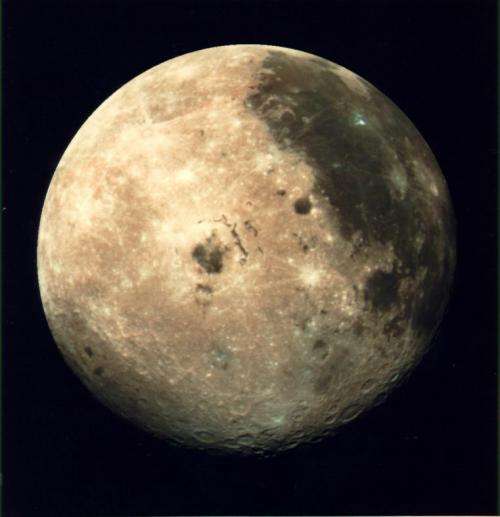NASA puts Earth's nearest neighbor, 'the Moon', within reach

NASA has created a new interactive web-based tool that incorporates observations from past and current lunar missions creating one of the most comprehensive lunar research websites to date.
The Lunar Mapping and Modeling Project at NASA's Marshall Space Flight Center in Huntsville, Ala. has created an online set of capabilities and tools that will allow anyone with an Internet connection to search through, view, and analyze a vast number of lunar images and other digital products. The data and tools available through the project website will allow researchers to perform in-depth analyses to support mission planning and system design for lunar exploration and science missions. It will permit detailed scientific analysis and discovery and open additional educational and outreach opportunities.
The project website is a one-stop location for finding, retrieving, and analyzing data about the moon, including the most recent lunar surface imagery, altimetry, temperature, lighting and other data, as provided by the Lunar Reconnaissance Orbiter (LRO) and its seven onboard instruments.
The orbiter, launched by NASA in 2009, continues to gather information about the moon from its orbit some 31 miles (50 kilometers) above the lunar surface. LRO has provided a treasure trove of data -- more than all previous lunar and planetary missions combined.
The Lunar Mapping and Modeling Project website will also include data obtained from past lunar programs and missions including Apollo, Lunar Orbiter, Lunar Prospector, Clementine, Kaguya (Japan) and Chandrayaan-1 (India).
"By making these data widely available to the general public, NASA seeks to provide engineers, scientists, mission planners, educators and students with a new resource that will allow them to view and analyze a wide array of lunar images and other data products in a way not previously available to such a diverse group," said Raymond French, integration lead for the Lunar Mapping and Modeling Project Office at Marshall.
Information provided through the project website can be easily used for many purposes, including planning and analysis tasks in the areas of potential landing site evaluation and selection; design and positioning of landers or other stationary assets; design of rovers or other mobile assets; development of terrain-relative capabilities; assessment and planning of scientific surface expeditions; scientific analysis and discovery; and integration of lunar science and exploration into the development of classroom activities and education curricula.
The website provides access to rich and highly complex products from previous missions such as images; digital elevation models; gravity models; local hazard assessment maps assessing slope, surface roughness, crater and boulder distribution; and resource maps detailing such information as soil maturity and the presence and abundance of hydrogen and other elements.
The Lunar Mapping and Modeling Project website features an easy-to-use browsing tool, and provides access to two additional visualization and analysis tools: Lunar Mapper, a lightweight, web-based geographic analysis client; and the Integrated Lunar Information Architecture for Decision Support application, known as ILIADS, a downloadable desktop geospatial information system client. Both tools offer advanced data manipulation and analysis.
The Advanced Capabilities Division of the Exploration Mission Systems Directorate at NASA Headquarters in Washington sponsored the Lunar Mapping and Modeling Project to support the agency's efforts to make lunar data easier to use and readily available to mission planners and system designers, while continuing to support science, education and public outreach efforts tied to study of Earth's sole natural satellite.
Provided by JPL/NASA


















